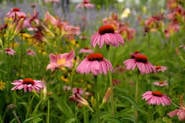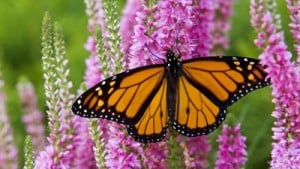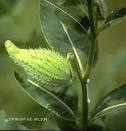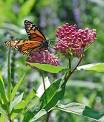Greetings from David, Kentucky!
In our world tragedy and violence so often seem to take center stage; it is so in our face everywhere we turn and we can easily get sucked into the drama. It is crucial that we create balance and make time to “unplug” from that reality and observe another reality. Beauty abounds in our world; and is essential to health and wellness! Though it may not get headlines, it nourishes our body, mind and spirit! If we take the time to notice, we will find how prevalent this reality is, and grow in appreciation of these gifts.
The other day my sister, Gina, wrote and sent a photo of an exquisite bouquet. “Ann, here are some flowers from my garden to brighten your day. Have a blessed one.” Her thoughtfulness helped create my reality!
Flowers are some of nature’s most beautiful gifts to humankind. Those who take the time to sow the seeds are beauty’s co-creators.

Fall is the season to take care of perennials, technically those plants that live for more than two years. If you noticed that these flowers did not put on their usual show of color this spring, it may be time to dig and divide. Once they become crowded blooms can become smaller and infrequent. Dividing the plants to create more room usually restores their vigor. 
Since perennials grow from underground structures like fleshy roots, rhizomes or bulbs; this is the part of the plant that needs to be divided. Dig up the plant, remove old leaves and shake off loose dirt to expose the underground parts. Gently pull or cut the plant apart into several sections making sure each section has some recent growth at the top. Replant one section in the original location, and set it in so that the crown is just at soil level. You can use the remaining “new” plants created from your divisions to expand your landscaping or share with gardening friends and relatives.

To be successful in attracting all butterflies, especially Monarchs, a combination of both nectar and host plants is needed. Male and female butterflies have different nectar needs, but will often converge where there are host plants. Unlike humans, butterflies “taste” through their feet when they land on a flower!
Monarchs utilize the milkweed species exclusively as host plants. This is the only plant that provides for this need. Their caterpillar ingests the toxins in the milkweed, which makes them poisonous to most predators. What an amazing survival technique!
Flower nectar provides both energy and re-hydration for butterflies. Most flower nectar is about 20% natural sugar, and 80% water.
With the help of my botanist friend, Kim, I have prepared a list of flowers, which are beneficial in attracting butterflies. Some of the familiar favorites are not native to Kentucky. The native species are highlighted in bold italic font. When planting a flower garden it is a good practice to search out the beauties from your particular bio-region. This said there is wisdom in planting both natives and nonnatives, as long as the nonnatives are not invasive. The nonnatives have their own unique beauty and are part of our wider world culture. The key is to be aware and conscious when choosing plants for your garden.
There are many great resources for learning about native species such as: Wild Ones – leading the natural landscaping movement …www.wildones.org/Wild Ones organization promotes landscaping of native plants and natural landscapes. Native plant community – Education & Advocacy Organization. Wild Ones …
Here in KY I also like: http://shootingstarnursery.com/catalog/index.php as a resource.
Common Name Scientific Name
Butterfly Milkweed Asclepias tuberosa
Common Milkweed Asclepias syriaca
Smooth Aster Aster laevis
Siberian Wallflower Cheiranthus allionii
Cosmos Cosmos bipinnatus Native to Mexico
Sulphur Cosmos Cosmos sulphureus
Purple Coneflower Echinacea purpurea
Indian Blanket Gaillardia pulchella- Native in the S.W. and Southern US
Annual Baby’s Breath Gypsophila elegans
Annual Candytuft Iberis umbellata
Gayfeather Liatris spicata
Sweet Alyssum Lobularia maritima
Marigold, Single Tagetes patula
Hoary Vervain Verbena stricta
Zinnia Zinnia elegans
Wild Bergamot Monarda fistulosa
Orange coneflower Rudbeckia fulgida
Tall coneflower Coreopsis tripteris
Lanceleaf coreopsis Coreopsis lanceolata
Early goldenrod Solidago juncea
Joe-Pye-Weed Eupatorium fistulosum
Mistflower Eupatorium coelestinum
Garden phlox Phlox paniculata
Meadow phlox Phlox maculata
Sundrops Oenothera fruticosa
Ox-eye sunflower Heliopsis helianthoides
Slender mountain mint Pycnanthemum tenuifolium
Obedient plant Physostegia virginiana
Remember, we create the world we live in by our thoughts and what we sow!
S. Ann Marie Quinn





Thanks, Sr. Ann, for this great post! Flowers are important to our gardens and our environment so I hope more of our Grow Appalachia families will incorporate them into their homes and yards.
Here are a couple of links to organizations that will provide (sometimes free or cheap) the correct variety of milkweed seeds for anyone wanting to help expand the monarch breeding areas:
http://www.saveourmonarchs.org/store/p17/Milkweed_Seeds.html
http://livemonarch.org/donation.htm
I had not seen a monarch this season until this past weekend while I was visiting my daughter in St. Louis. One flew into her yard in front of me. A reminder for all of us to do our part.
Thank you for sharing this!!
Thank you Yvonne for this information and for your kind remarks. Consider yourself hugged!